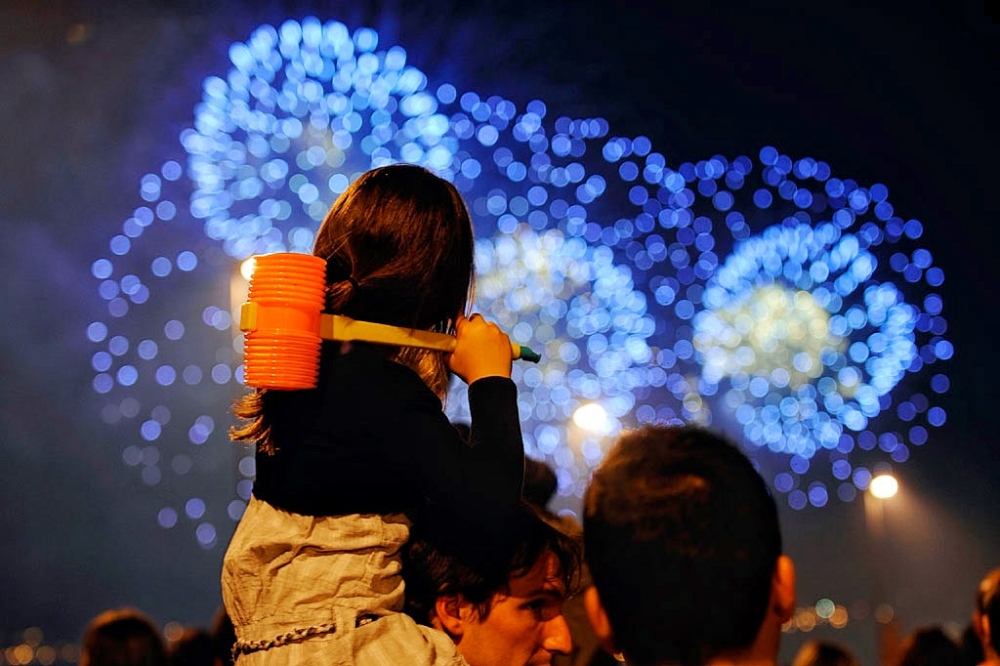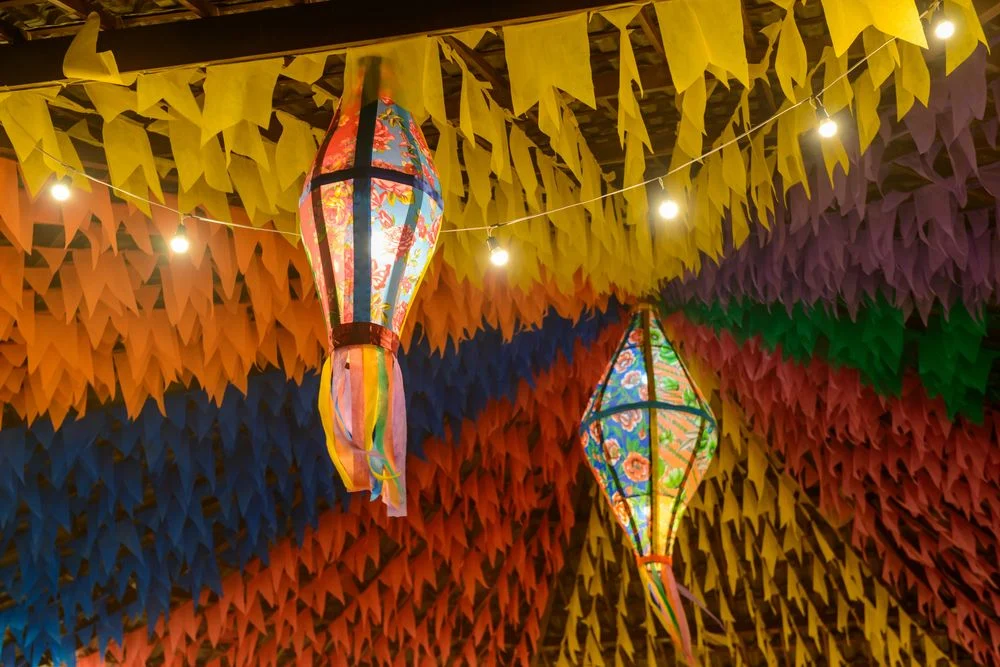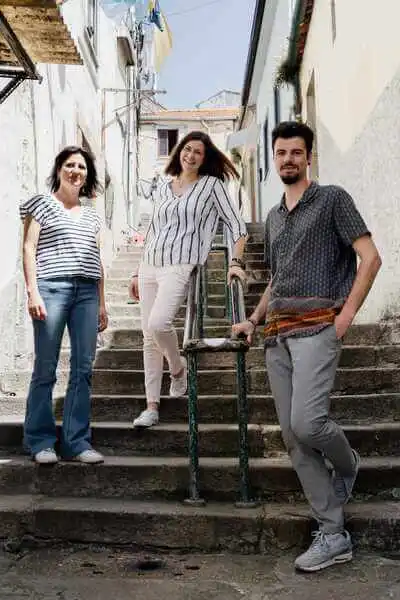The São João Festival is undoubtedly one of the most popular traditional events of the year. The fine weather is back, the sun is setting later and the heat is on: in other words, it’s the perfect atmosphere for a good-natured party. On the evening of June 23, almost anything goes! It’s even possible to hammer police officers on the head… Let us explain in a little more detail.
Origins of the São João
To fully understand this celebration, it’s essential to know its origins and meaning. It’s time for festivities to commemorate the birth of João Batista (John the Baptist), the prophet who announced the coming of Jesus Christ. Although its roots are religious, the festival’s current practices are not exclusively religious, allowing everyone, believers and non-believers alike, to take part.
According to the Bible, João Batista was one of Christ’s 13 apostles and the one who baptized him. The bonfires lit on the evening of June 23 (a practice also found in France) symbolize light, in homage to the “Light” foretold by João Batista (who represents Jesus himself). It is also said to be a reference to the fire lit by Isabel, the prophet’s mother, as a sign of joy for Mary’s pregnancy. These two women were cousins, establishing a kinship between Christ and the prophet. Although it may seem surprising, they were both born of a miracle, six months apart.
This is the story behind this saint, for whom Porto shines brightly once a year. However, this festival has even more distant origins, going back to a pagan celebration that marked the summer solstice and celebrated nature and the Sun God. Over time, the festival has been Christianized, retaining elements of both traditions.
In short, these festivities are marked by history, which makes them all the more extraordinary and enjoyable.
Traditional São João practices
So how is this long-awaited day celebrated?
Several unique traditions make this a magical evening. It’s hard not to feel transported to another dimension, where rivalries no longer exist and everything seems to be going smoothly.
Hammer blows and garlic
Let’s start with the most emblematic and blatant tradition: plastic hammer blows. These colorful toys are available on every street corner, giving everyone a chance to get their hands on them. The aim is to gently tap passers-by on the head in greeting. Before the introduction of plastic hammers in the 1970s, garlic stems in bloom or leek branches were used as symbols of good luck and fertility. You can still catch a glimpse of some of these traditional symbols amid the sounds of hammering and laughter from passers-by.
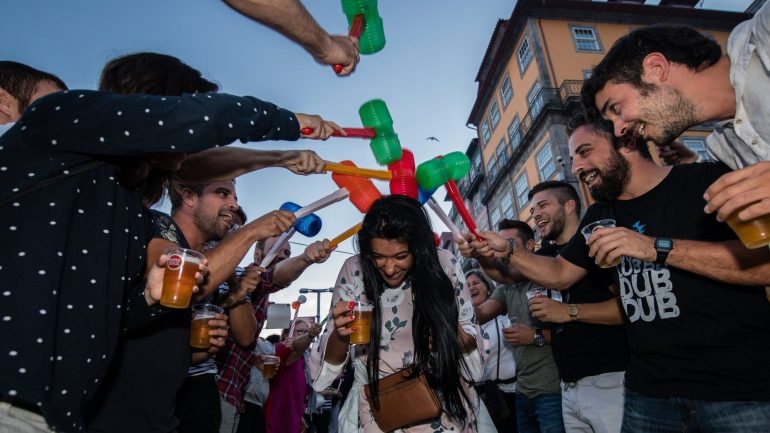
Barbecued sardines: the traditional São João dish
The traditional dish of the São João Festival is undoubtedly barbecued sardines. On this special evening, restaurants bring out their barbecues and sometimes set up large convivial tables on terraces, filling the streets of Porto with a delicious aroma. Sardines are usually accompanied by a good fino (local draught beer).
According to historian Joel Cleto, this tradition was born when, a few years ago, a merchant set up shop in a square to sell grilled sardines during the feast of Nosso Senhor de Matosinhoswhich takes place shortly before São João. Such was the success of these sardines that they gradually replaced the lamb, hot bread and coffee that were once traditional dishes for this festival.
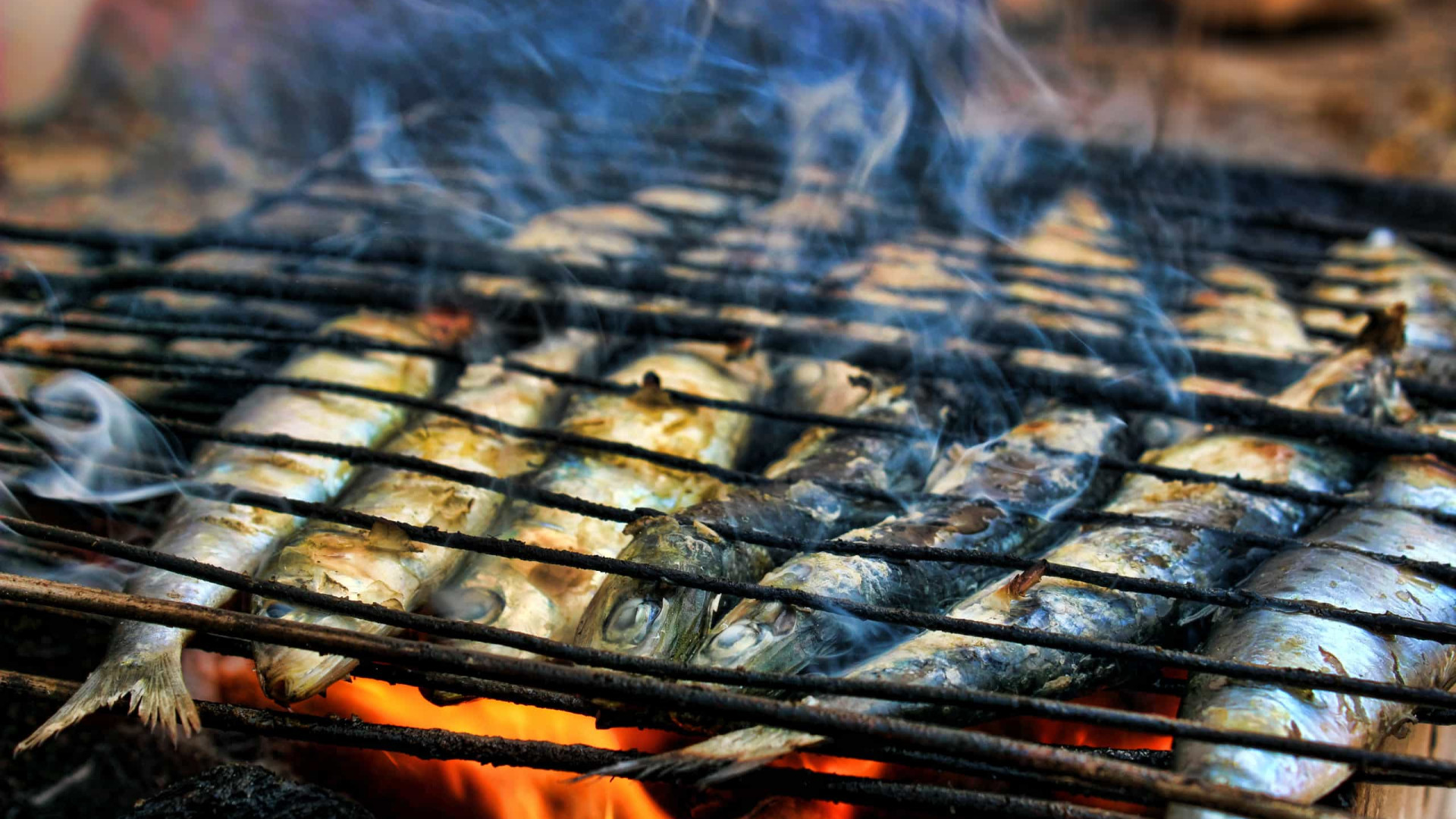
Bathing: a daring tradition on São João Day
This tradition is less widespread, but is reserved for the bravest. Water has always been a symbol of purification and fertility. Women used to bathe in it during celebrations to increase their fertility. Today, it’s mainly young people who perpetuate this custom. A salty evening dip on the beaches of Foz or Matosinhos adds a special touch to the festivities! You can also swim in the Douro. Some people even dare to jump from bridges or high ledges to add a dose of atmosphere to the party and cool off. So, are you ready for a swim?
Lantern throwing (hot balloons): An enchanting São João tradition
This must be one of the finest traditions of the São João. On this magical evening, numerous lanterns are thrown, illuminating the sky with cascades of gold. These hot-air balloons are accessible to all, and it’s common for friends or couples to light one together. This custom is the most obvious nod to the pagan festivities of yesteryear, when light and fire were celebrated. Admittedly, it’s not as beautiful as in Rapunzel (there aren’t as many launched simultaneously), but the effect is no less grandiose.
However, it is important to note a few precautions. Some balloons can fall back quickly and present a potential hazard. It’s also worth mentioning that lantern throwing also generates a form of pollution. That’s why it’s essential to be responsible during this activity.
Despite these considerations, lantern throwing remains a magical and captivating experience on São João.
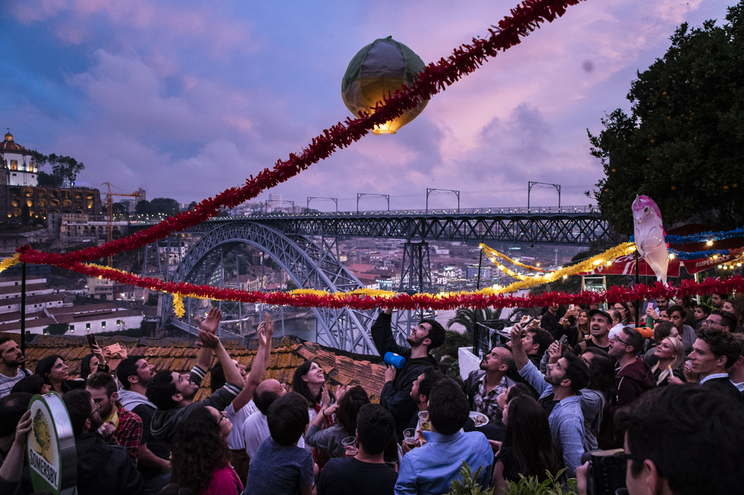
Porto fireworks: A breathtaking spectacle not to be missed
The crowd gathers and waits patiently to be dazzled by the colorful lights that set the sky ablaze. From then on, smiles lit up faces and eyes sparkled as the light illuminated the entire sky. Sometimes, it even seems that our vision isn’t wide enough to see the lights as a whole.
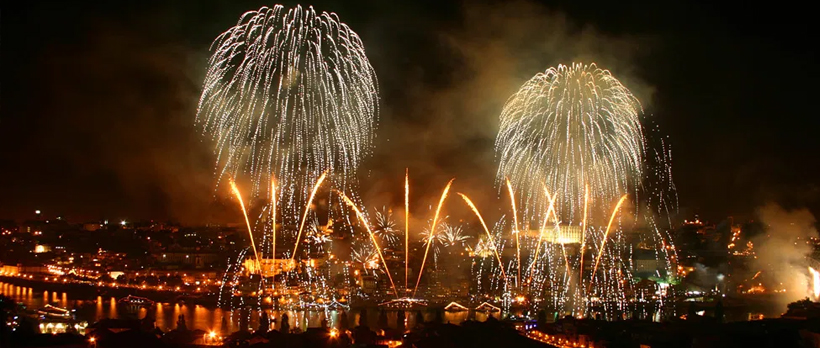
For all those who have read the article so far, here’s a bonus: we’re going to share with you the best spots, in our opinion, to enjoy the fireworks.
- La Ribeira: Whether you’re in Porto or Vila Nova de Gaia, will put you right under the fireworks, and your heart will beat to the rhythm of the explosions. There’s no better way to get the full experience. But beware of the crowds!
- Fontainhas: This district of Porto is a little further away from the fireworks, but offers an equally magnificent view. Although it’s less crowded than the Ribeira, the crowds are still dense.
- Jardim do Morro: This garden, located in Vila Nova de Gaia, offers a panoramic view of the Douro as it winds its way between the docks. The good news is that it’s precisely opposite the Luis I Bridge, from where the fireworks will be fired!
- Virtudes: For those who want to see the show from a little further away and with fewer crowds, the Virtudes garden is the ideal place. There’s a beautiful view of the Douro and you can also watch the sky being illuminated.
Concerts and dance
To enjoy the São João, there’s no need to follow a specific schedule! Just stroll through the streets of Porto. A small stage is set up in each of the city’s neighborhoods to host music groups. The mood is set by traditional Portuguese pimba music. Sometimes it’s even the locals who put on the show from their balconies. Believe us, you won’t be able to resist the rhythm! Dance and song are key elements of this celebration.
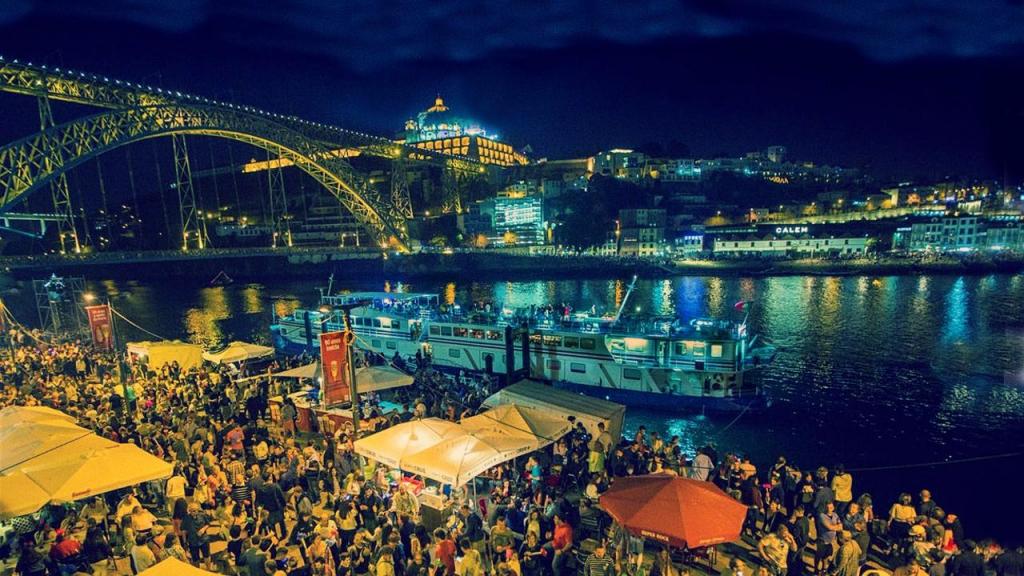
Our tips for enjoying the São João
Choose comfortable shoes
Porto’s streets are far from uniform and are often cobbled (difficult to walk in heels). What’s more, you’re likely to get carried away by the atmosphere and the crowds, and without realizing it, the kilometers will be swallowed up quickly.
Favour public transport
As in any festive city, car traffic is restricted. To avoid problems finding a parking space, we recommend using public transport, especially the metro. On this night in particular, they run all night long to make it easier for you to get around.
Watch out for the Atlantic breeze!
Nights in Porto can be chilly, especially when you get away from the crowds or when the festivities come to an end. So pack a light jacket or vest!
Last but not least
Grab a hammer and become a kid again for an evening. There’s nothing like getting caught up in the game.
What are you doing to celebrate São João?
Thanks to this article, you now have a thorough understanding of the traditions and significance of São João. This emblematic festival is a symbol of fertility and love, the same aspects that were already celebrated in ancient times by pagans at the summer solstice (Litha).
Celebrating the birth of João Batista and honoring the light, São João has preserved its religious heritage while embracing new festive practices. From hammer blows and grilled sardines to refreshing dips and lantern tosses, every tradition adds a touch of magic to this exceptional night.
Whether you’re a local resident or an avid traveler, Porto’s São João offers an ideal opportunity to immerse yourself in Portuguese culture and tradition. Let yourself be carried away by the festive energy, dance to the rhythm of pimba music and create lasting memories.
What about you? Where will you be to celebrate São João? What are your habits during this spectacular celebration?
